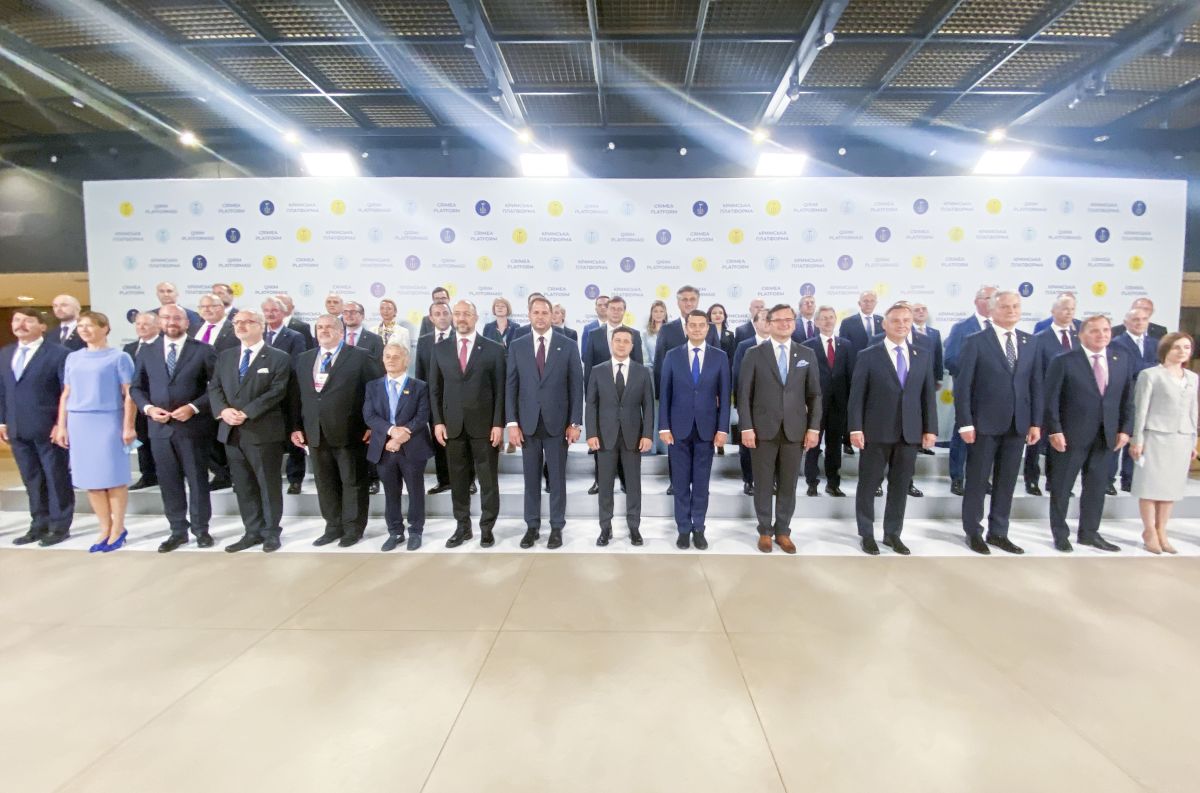The Crimea Platform Summit
The summit of the Crimea Platform, which aims for a peaceful end to the Russian occupation of Crimea, was held in Kyiv on 23 August. It will not directly lead to the restoration of Ukrainian control over the peninsula, nor to the imposition of new sanctions on Russia. However, Ukraine has managed to confirm the support of 46 states and international organisations for its policy of non-recognition of the annexation of the Crimean Peninsula.
 Photo: Irina Yakovleva/TASS
Photo: Irina Yakovleva/TASS
What goals were set for the Crimea Platform?
The Crimea Platform is an international consultation format whose inaugural summit took place in Kyiv on 23 August. The aim of the Platform, according to the Strategy for the De-occupation and Reintegration of Crimea published in March, is to consolidate international efforts to regain Ukrainian control over the Crimean Peninsula. This is to be done diplomatically, by increasing international pressure on Russia, in particular through the tightening of sanctions. Cooperation within the Platform also aims to keep the issue of the de-occupation of Crimea on the international agenda, reducing the risk of gradual recognition of the annexation of the peninsula (e.g., by Afghanistan, North Korea, Nicaragua, Syria, and Venezuela, among others). The Platform also aims to draw the attention of the international community to Russia’s human rights violations in Crimea.
What are the main findings of the Crimea Platform summit?
The summit ended with the signing of a joint declaration. Its signatories decided to continue the policy of non-recognition of the annexation of Crimea. The parties to the declaration pledged to consider further restrictions if “Russia’s actions so require”. The lack of a firm declaration to introduce new sanctions may stem from the reluctance of some summit participants to tighten their policy towards Russia. The declaration envisages the continuation of the International Crimean Platform as a forum for consultation and coordination of policies to peacefully end the Russian occupation of the peninsula. It also envisages the establishment of a mechanism for permanent communication between members of the Platform at the level of foreign ministries.
What is the internal context of the summit?
Ukrainian President Volodymyr Zelensky initially avoided raising the issue of Crimea’s de-occupation in the international arena, hoping that this would facilitate negotiations with Russia on the settlement of the conflict in Donbas. Bringing peace by diplomatic means was Zelensky’s main election promise. However, the lack of progress in negotiations with Russia was one of the factors contributing to the decline in political support for the president and his Servant of the People party. To stop the unfavourable trend, the Ukrainian president tightened his policy towards Russia, introducing, in particular, sanctions against pro-Russia politicians and media. The summit is part of Ukraine’s assertive policy towards Russia and aims to strengthen Zelensky’s position in the country.
What is the external context of the summit?
Russia sought to have as few countries as possible attend the Crimea Platform summit. The Russian foreign minister announced that participation in the event would be interpreted as a hostile act against Russia and an attempt to violate its territorial integrity. Nevertheless, the event was attended by representatives of 42 states (including all EU, NATO, and G7 countries) and four international organisations (NATO, EU, Council of Europe, and GUAM). No delegation from an African or South American country was present, which proves the high effectiveness of Russian diplomacy on these continents. Also, China, avoiding controversial issues in its relations with Russia, did not participate. The ministerial rank of the representatives of France, Germany, Turkey, and the U.S. is a disappointment for Ukraine and indicates the high importance of cooperation with Russia for these states despite their support for the goals of the Platform. Delegations at the level of president or prime minister were sent by 13 countries, including Poland, Finland, Georgia, the Baltic States, Romania, and Sweden.
What will be the consequences of the creation of the Crimea Platform?
The summit will not directly lead to the end of the occupation of Crimea due to the lack of political will to discuss this issue on the Russian side. The lack of agreement on increasing political and economic pressure on Russia does not bring this prospect any closer. The Platform can, however, be an effective tool for raising the international community’s awareness of Russia’s violations of human rights and international law. A condition for its effectiveness, however, will be Ukraine’s ability to mobilise participants of the Platform to stand together on specific initiatives. Poland, which will take over the OSCE chair in 2022, together with the countries of the Platform, may seek to have the OSCE Special Monitoring Mission to the Crimean Peninsula admitted by Russia, as called for by the signatories of the summit joint declaration. In the longer term, the Platform increases the chances of extending existing international sanctions on Russia related to the annexation of Crimea and reduces the likelihood of the peninsula being widely recognised as Russian territory.

